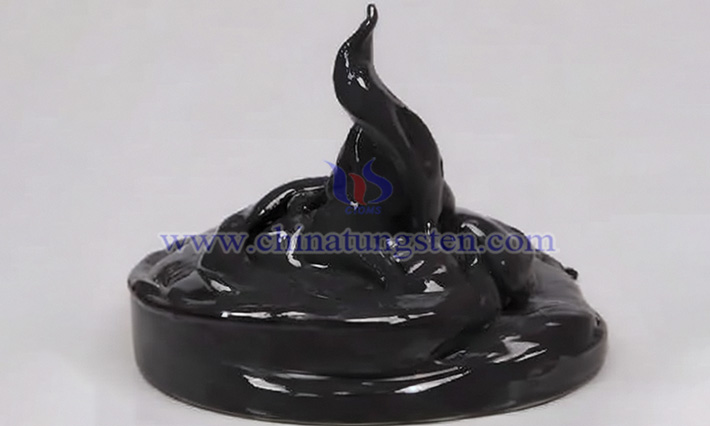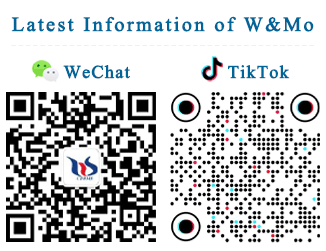Why Does Tungsten Disulfide Nanosheet Have Lubricity?
- Details
- Category: Tungsten Information
- Published on Monday, 17 February 2025 20:18
Tungsten disulfide nanosheet (WS₂ nanosheet) is often used as a lubricant additive. When added to lubricating oils and greases, it can greatly improve the lubrication effect. It is used in automobile engines, industrial gearboxes and other equipment to reduce wear on mechanical parts and extend the service life. It can also be made into a dry-film lubricant and coated on the surfaces of aerospace parts and precision instruments. It can play a lubricating role under special working conditions such as high temperature and high vacuum, ensure the stable operation of equipment, and improve the reliability and efficiency of mechanical systems.

The lubricity of tungsten disulfide nanosheet is mainly attributed to its special crystal structure, low surface energy, chemical-bond characteristics, and nano-size effects.
Crystal structure
Tungsten disulfide nanosheet has a typical layered structure, and its basic structural unit is a sandwich structure formed by a layer of tungsten atoms sandwiched between two layers of sulfur atoms, namely S-W-S. These atomic layers are bound together by weak van der Waals interactions. In this structure, the tungsten atoms and sulfur atoms in the layer are connected by strong covalent bonds to form a stable planar hexagonal network, which makes the bonding force between atoms in the layer very strong and difficult to slide relative to each other. However, the van der Waals force between layers is relatively weak. Compared with the covalent bonds within the layers, the bond energy of the van der Waals force is lower, which makes relative sliding between layers possible. When subjected to an external force, the layers of WS₂ nanosheet can slip relatively easily, thereby playing a lubricating role, reducing direct contact and interaction between friction surfaces, and reducing friction.
The crystal structure of tungsten disulfide nanosheet also has a certain anisotropy. In the direction parallel to the layer plane, the arrangement of atoms is relatively regular, and the interaction between layers is relatively weak, making it easier to slide in this direction. In the direction perpendicular to the layer plane, the interaction between atoms is strong, showing higher hardness and stability. This anisotropy enables WS₂ nanosheet to form a directional lubricating film on the friction surface when used as a lubricant. Interlayer sliding parallel to the friction direction can effectively reduce friction resistance and provide good lubrication performance.
Surface energy
The surface energy of tungsten disulfide nanosheet is low, which means that its adhesion to the surface of other substances is relatively weak. When WS₂ nanosheet is adsorbed on the friction surface, a uniform and stable lubricating film can be formed on the surface. Due to its low surface energy, this lubricating film is not easily destroyed by external factors, nor is it easy to strongly adhere to the friction-pair surface, so that the friction surfaces can slide relative to each other with low resistance. At the same time, the low surface energy also makes it difficult for WS₂ nanosheet to agglomerate, and it can maintain good dispersion in the lubrication environment, so that it can be more evenly distributed on the friction surface, play its lubricating role, further reduce the friction coefficient, and improve the lubrication effect.

Chemical-bond characteristics
During the friction process, the surface chemical bonds of tungsten disulfide nanosheet will change and adjust to a certain extent. When in contact with the friction surface, the sulfur atoms on the surface of WS₂ nanosheet may react chemically with the metal atoms on the friction surface to form some chemical bonds or chemical adsorption layers. This chemical reaction can not only make WS₂ nanosheet firmly attached to the friction surface, not easy to be worn and fall off, but also dissipate energy by breaking and reforming chemical bonds during the friction process, thereby reducing the heat and wear generated by friction. At the same time, the adjustability of this chemical bond can also enable WS₂ nanosheet to adaptively adjust its surface state under different friction conditions, such as different temperatures, pressures and friction speeds, to maintain good lubrication performance.
Nano-size effect
The nano-scale size of tungsten disulfide nanosheet gives it some special physical and chemical properties, which is conducive to the performance of its lubrication performance. Due to its small size, WS₂ nanosheet has a large specific surface area and can contact the friction surface more fully to form a more complete and uniform lubrication film. Moreover, the flexibility and deformability of the nanosheet are enhanced. When subjected to friction pressure, it can more easily adapt to the microscopic morphology changes of the friction surface and fill the surface unevenness, thereby effectively reducing the surface roughness and friction resistance.
Nano-sized tungsten disulfide also has special properties such as quantum effects, which may affect the distribution of its surface electron cloud and the properties of chemical bonds, thereby changing the way it interacts with the friction surface, making the friction and lubrication behavior at the nanoscale show different characteristics from macroscopic materials, further improving its lubrication performance.
- Tungsten Manufacturer & Supplier, Chinatungsten Online: www.chinatungsten.com
- Tungsten News & Prices of China Tungsten Industry Association: www.ctia.com.cn
- Molybdenum News & Price: news.molybdenum.com.cn
- Tel.: 86 592 5129696; Email: sales@chinatungsten.com



 sales@chinatungsten.com
sales@chinatungsten.com